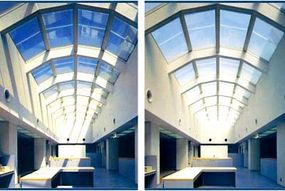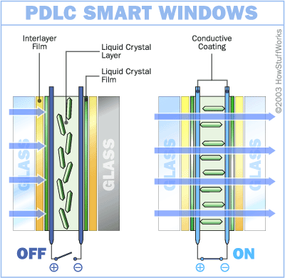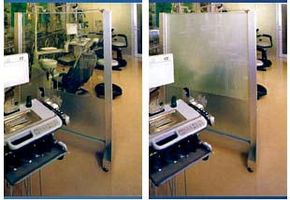Liquid Crystals
Windows are undergoing a change the likes of which haven't been seen since the horizontal mini-blind was developed 50 years ago. Soon, curtains and window blinds could be obsolete. SPD technology is certainly one of the reasons for this window revolution, but other competing technologies like liquid crystals are responsible, too.
You are probably familiar with liquid crystals, which are found in many of the products you use every day. Portable computers, calculators, digital clocks and watches, and microwave ovens all use liquid crystal displays (LCDs). In these displays, electricity is used to change the shape of the liquid crystals to allow light to pass through, thus forming figures and numbers on the display.
Advertisement

The technology behind an LCD is similar to the polymer dispersed liquid crystals (PDLCs) used in some smart-window applications. In these windows, the liquid crystals respond to an electrical charge by aligning parallel and letting light through. When the electrical charge is absent, the liquid crystals in the window are randomly oriented. With liquid crystals, the glass is either clear or translucent. There are no intermediate settings.
PDLCs are not a developing technology. In fact, they can already be found in offices and homes around the globe. Because it can achieve a translucent setting, PDLC technology is great for homes and offices -- you get privacy without sacrificing all light.

PDLCs and suspended particle devices require power for their smart windows to be transparent. A different smart window technology is in development that would reverse the process.
So what else is in store for the future of smart windows?
